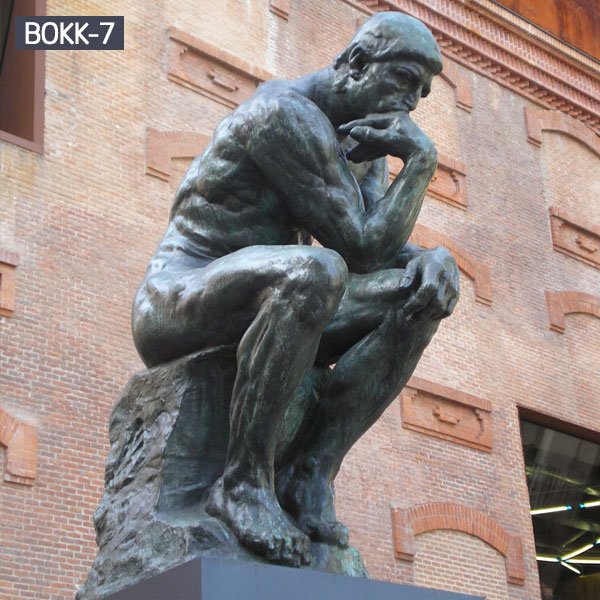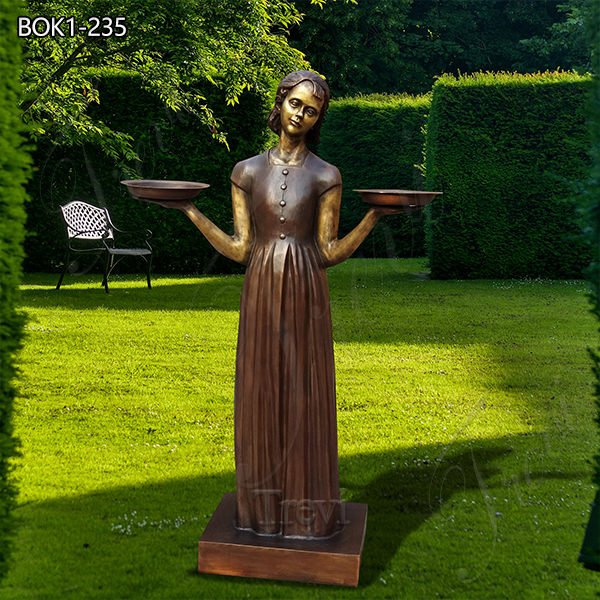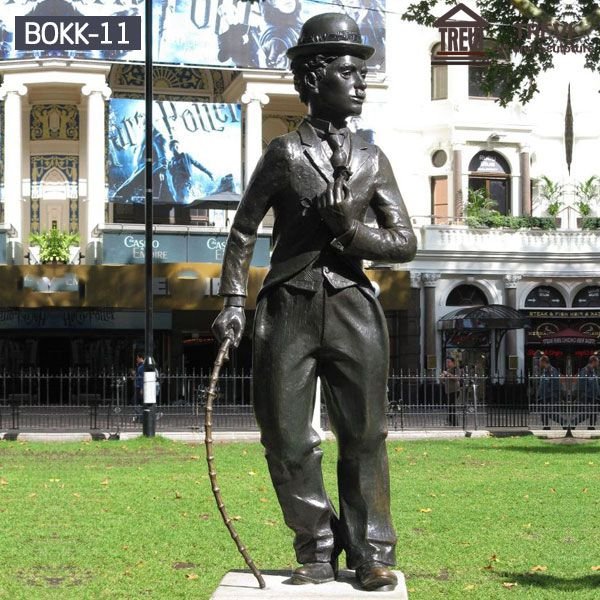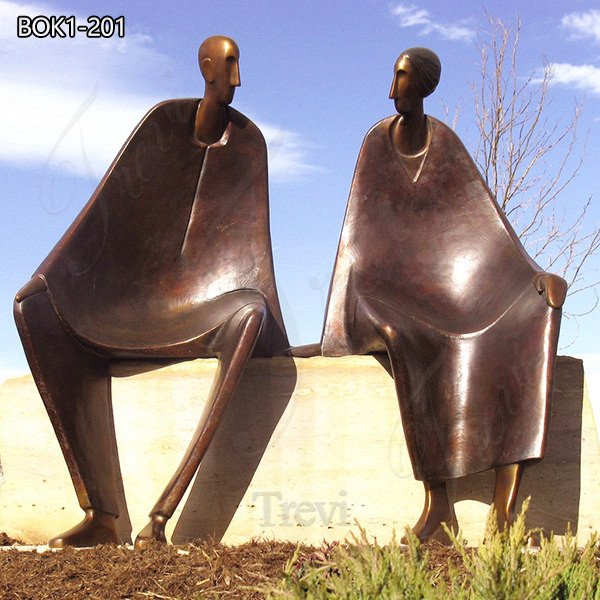Rodin the thinker thinking man replica bronze sculpture outdoor

The original idea of the thinker statue was not a hero’s isolation, but a part of the gates of Hell as Rodin’s monument-a pair of bronze doors for the Museum of Decorative Art in Paris. This is a bronze replica of Rodin the thinker,standing about 150cm, or customized size is acceptable!

Although they have never been projected in the life of a sculptor, they provide a rich source of thought for Rodin, individuals and groups who work and redo in the rest of his career. The theme of “The Gates of Hell” was taken from Dante’s Inferno, and the figure on the lintel was initially thought of as the poet himself. His nakedness, however, made him a universal embodiment of every poet–every creator–to draw new life from imagination. In the late the 1880s, Rodin began to show this character, sometimes a poet poet, and other times as a poet/thinker. By the year 1896, however, it has become a simple thinker, a more general image, revealing from a physical perspective the psychological effort and even the pain of creativity. As Rodin himself described it: “What my thinker thinks is that he not only thinks with his brain, with his knitting eyebrows, his dilated nostrils and his compressed lips, but with his clenched fist he holds every muscle in his arm, back and legs.” and grab the toe.
“ Rodin’s thinkers today have different versions and sizes of replicas, pls feel free to talk to us for more information!
Get In Touch
FAQs
What’s the material?
Material: The material of the statue is then decided by the client. The sculptor may also use a small clay model to better portray his conception of the design. The clay model can be modified to fine tune the client’s wishes.
Bronze Sculpture Statue
Mini-Sculpture: Finally, the bronze sculpture artist may finalize the miniature model of the final design in order to give the client a preview into how the final product will look. This model is made using the material decided, and it can be used by the client for marketing purposes so that he can raise funds for the sculpture.
Creating the Backbone: The backbone of the bronze statue, also called the armature consists of a steel frame with foam added to it in order to resemble the rough outline of the final product. This is then sealed with a latex coat to secure it.
The Sculpting: The main work starts only now. Many pounds of hot clay are used and applied by hand to “block in” the design for the first time. The bronze sculpture artist then invests a lot of time adding more clay, removing some clay and molding the clay until the final product finally resembles the required design. Tiny details are added on to give more preciseness to the bronze statue and make it more real.
How do I clean and maintain a bronze sculpture?
Remove dust with a damp cloth.
Do not use metal objects or wire brushes to clean the sculpture.
Do not apply abrasives or cleansers that will possibly scratch the finish.
ZUD – Non- Abrasive Cleaner. Use to remove stubborn stains. Zud cleans all metal surfaces including bronze. Zud can be used in powder or liquid form.
Lemon Oil – Apply a small amount of oil with a paintbrush or soft cloth. Cover the entire figure with oil. Wipe the surface gently with a soft cloth to take off the excess oil.
Paste Wax- A very thin, even coat of wax should be applied with a soft cloth. Allow the wax to sit and dry before polishing. Wax should be applied after bronze has been cleaned and dried. Do not apply if using lemon oil.
Do Nothing: Many bronze owners prefer to sit back and enjoy the natural reaction and aging process of their sculpture.
What kind of sculpture is right for me?
We have a tremendous inventory of existing designs and unique items that we have been collecting for many years. After reviewing the website, Contact Us if you are unable to find what you are looking for.
What’s the wax?
Ancient Sculpture Gallery is proud to present you with lost wax bronze reproductions of statues and busts from the Egyptian, Greek, Hellenistic, Roman, Asian Oriental, and Western civilizations. “Lost Wax” bronze (or hot-cast bronze) is actually 100% pure Bronze – essentially copper and tin. The making of a “lost wax” bronze is a complex and time consuming process, and specific technical expertise is needed to accomplish the task of making a bronze. The most known and used process for making “lost wax” involves pouring of molten bronze. This is the same method used by the ancient civilizations to create bronze sculptures. Our lost wax bronze sculptures are produced in this same technique.




